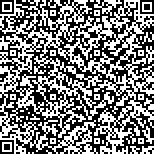下载中心
优秀审稿专家
优秀论文
相关链接
摘要

基于全国自动站与CMORPH融合降水数据集,综合评估全球降水计划(GPM)下的IMERG与GSMaP的4套纯卫星降水数据,从极端降水指标、极端降水事件探测能力、对于不同历时的极端降水事件精度评估3个方面研究纯卫星降水产品监测极端降水的能力。依据极端降水的阈值将研究区分为3个区域进行研究,结果表明:(1)在RX1指标中,IMERG、GSMaP数据均在受季风影响的复杂地形区域呈现出明显的高估状态,在其余地区存在不同程度的低估现象;在R95pTOT指标中,卫星数据均表现较好,与地面参考数据具有较高的相关性。(2)在极端降水事件探测方面,4套纯卫星产品在东北地区的表现均优于其他区域;GSMaP表现优于IMERG数据,具有较低的误报率,但对极端降水的反演精度较低。(3)在不同历时的极端降水事件精度评估中,IMERG、GSMaP卫星降水产品在历时较长的极端降水事件中的表现较好,具有更高的精度;对于极端日降水事件,卫星降水产品在高雨强下的误差显著性十分明显,远远高于复杂地形对卫星降水反演精度的影响,导致卫星降水在复杂地形区域(Ⅲ区)的表现优于其他区域。总体上,IMERG产品在研究区对极端降水的监测能力优于GSMaP产品,其中又以IMERG_Late表现最佳;4套卫星降水产品均能表现出研究区的极端降水区域特征,但在研究区大部分区域呈现出低估状态,卫星降水产品对于雨强的误差订正仍是未来极端降水反演的重点与难点之一。
This study aims to comprehensively evaluate the four sets of pure satellite precipitation data of IMERG and GSMaP under Global Precipitation Measurement (GPM). The evaluation content is divided into three aspects: extreme precipitation index, extreme precipitation detection ability, and accuracy evaluation of extreme precipitation events with different durations.Based on the grid data set of automatic stations and CMORPH, the study area is divided into three regions according to the threshold of extreme precipitation events. Five evaluation indexes, namely, CC, BIAS, RMSE, POD, and FAR, are used to quantitatively study the performance of satellite precipitation in extreme precipitation. The precipitation products of IMERG and GSMaP are affected by factors such as terrain, precipitation intensity, and inversion algorithm, showing similar error characteristics and obvious accuracy differences. The correction of similar error characteristics will be the focus and direction of extreme precipitation inversion in the future. The discussion of accuracy difference can provide a reference for the improvement of the precipitation satellite inversion algorithm. (1) In the RX1 extreme precipitation index, IMERG and GSMaP data are obviously overestimated in the complex terrain area affected by complex terrain and underestimated in other areas. In the R95pTOT index, four sets of satellite data perform well and have a high correlation with ground-based datasets. (2) In terms of detection capability of extreme precipitation events, the performance of four pure satellite products in Northeast China is better than that of other regions. GSMaP performs better than does IMERG data with a lower false alarm rate, but the retrieval accuracy for extreme precipitation is low. (3) In the accuracy evaluation of extreme precipitation events with different durations, IMERG and GSMaP satellite precipitation products have better performance and higher precision in long-term extreme precipitation events. For extreme daily precipitation events, the error of satellite precipitation products under high rain intensity is very obvious, which is much higher than that of complex terrain on the accuracy of satellite precipitation retrieval, resulting in the performance of satellite precipitation in complex terrain area Ⅲ is better than other regions. Overall, the IMERG products have the better ability to monitor extreme precipitation in the study area than GSMaP products, and IMERG_Late data performs best. The retrieval error of extreme precipitation from IMERG and GSMaP satellite precipitation products has obvious regional characteristics in China, and the error characteristic of underestimation of high rainfall intensity is significant. The four types of satellite precipitation products can show the extreme precipitation region characteristics in study area but underestimate the precipitation in most parts of the study area. The error correction of satellite precipitation products for rainfall intensity remains one of the key and difficult points in future extreme precipitation retrieval.

